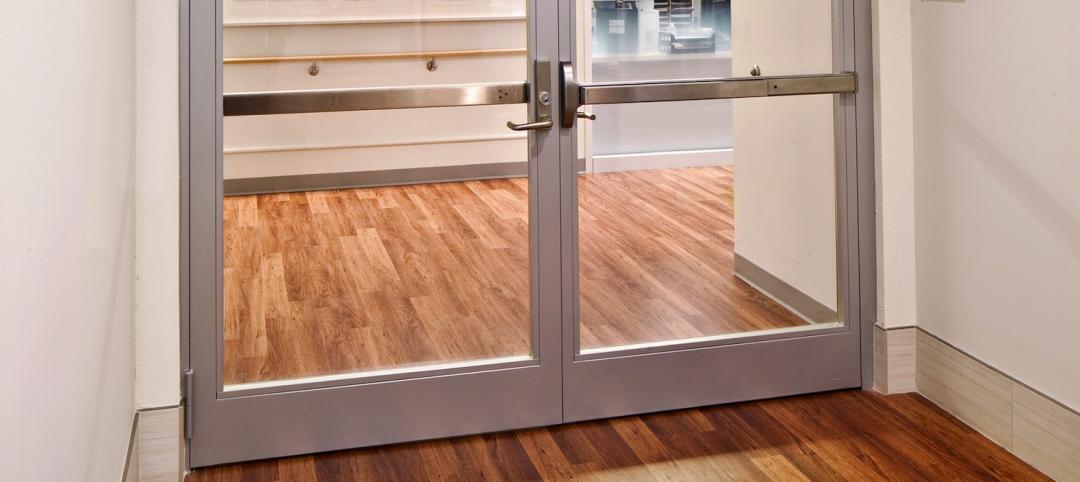Wired glass was the only fire rated glass (FRG) product available for over 100 years. In traditional wired glass, the embedded wires hold annealed glass in place during the fire test to achieve a fire rating. While the wires give the illusion of increased strength and impact resistance, the opposite is true. Wired glass is not safety glazing. The wires actually weaken the glass, making it half as strong as ordinary window glass. Wired glass breaks easily on human impact, exposing razor sharp wires that can trap a victim’s limb in the opening and increase the severity of the injury. Alarmingly, wired glass is the most commonly used FRG product found in educational facilities, leading to over 2,500 wired glass impact injuries in schools every year. In 1977, the Consumer Product Safety Commission (CPSC) enacted a federal safety glazing standard (16 CFR 1201) to protect people from injury due to accidental impact with glazing. The building codes apply the CPSC standard to require that glazing used in hazardous locations, such as doors and sidelites, must meet minimum Category I and II impact standards, depending on the size of the glazing panel. Smaller glazing panels in sizes up to 1296 square inches must meet the Category I impact test of 150 ft. lbs. Larger glazing panels must meet the higher Category II standard impact test of 400 ft. lbs. of impact resistance. At the time the federal standard was enacted, wired glass manufacturers alleged they lacked the technology make a fire rated product that could meet the new CPSC standards. Since wired glass was the only FRG product available in 1977, the IBC granted wired glass a temporary exemption from meeting the CPSC standard. This exemption allowed wired glass used in fire assemblies to meet a lower ANSI Z97.1 impact standard of 100 ft. lbs., which the CPSC acknowledged was inadequate to protect anyone except children under five. For more information, click on the link below.
Related Stories
| Sep 26, 2013
Literature review affirms benefits of daylighting, architectural glazing
The use of glass as a building material positively impacts learning, healing, productivity and well-being, according to a white paper published by Guardian Industries and the University of Michigan Taubman College of Architecture and Urban Planning. The findings highlight the significant influence daylighting and outside views have on employees, workers, students, consumers and patients.
| Sep 19, 2013
6 emerging energy-management glazing technologies
Phase-change materials, electrochromic glass, and building-integrated PVs are among the breakthrough glazing technologies that are taking energy performance to a new level.
| Aug 23, 2013
The Exploratorium’s tall order
The newly-opened Exploratorium has brought energy and excitement to the city’s bustling waterfront. EHDD transformed the historic Pier 15, built in 1915, to a 330,000 square foot indoor and outdoor campus, being touted as the largest net-zero building in the city and potentially the largest net-zero museum in the world.
| Aug 22, 2013
Energy-efficient glazing technology [AIA Course]
This course discuses the latest technological advances in glazing, which make possible ever more efficient enclosures with ever greater glazed area.
| Jul 23, 2013
Clearly Protective: Glazing for Life Safety at Seidman Cancer Center
Design team turns to fire-rated glazing for interior doors to give access to natural light, patient privacy and clear wayfinding throughout the building.
| Jul 12, 2013
Statue of Liberty Monument bolstered by Vetrotech Saint-Gobain’s fire-rated glass
The Statue of Liberty National Monument reopened to the public featuring two new fire stairwells and an elevator that will allow visitors with reduced mobility to look into the Statue’s interior structure.
| May 17, 2013
5 things AEC pros need to know about low-e glass
Low-emissivity glasses are critical to making today’s buildings brighter, more energy-efficient, and more sustainable. Here are five tips to help AEC professionals understand the differences among low-e glasses and their impact on building performance.
| May 8, 2013
Preventable curtain wall failures - AIA/CES course
In many cases, curtain wall failures are caused by fairly simple errors that occur during the fabrication and installation process. This presentation will highlight common errors and when they typically occur.
| May 8, 2013
Guardian’s Scott Thomsen headlines Glass Performance Days Finland Conference, June 11-15
Scott Thomsen, president of Guardian Industries Global Flat Glass Group, will engage the global glass technorati in an opening speech at Glass Performance Days Finland June 11-15 in Tampere. In addition, Guardian technologists and scientists will present a wide variety of technical papers and glass industry innovations.
| May 6, 2013
SAFTI FIRST announces 3D Autodesk Revit models for fire rated wall, window, and door systems
SAFTI FIRST, leading USA-manufacturer of fire rated glass and faming systems, is proud to announce that Autodesk Revit models are now available for its fire rated walls, window and door systems via www.safti.com and Autodesk Seek.
















